Reviews and recommendations are unbiased and products are independently selected. Postmedia may earn an affiliate commission from purchases made through links on this page.
Celebrate the holidays with fortified wines

Anthony Gismondi offers up his favourite fortified wines for your holiday pleasure

Article content
Fortified wines have a history going back centuries. The category goes in and out of fashion, but for the most part, it has always been a popular choice for many wine drinkers. The initial impetus for fortified wines began well before refrigeration by producers looking to preserve their wine for long periods, especially during lengthy sea voyages on the way to market.
Advertisement 2
Article content
The basic process entails adding distilled spirits to an already fermenting base wine. Depending on when the spirit is added, producers can decide how sweet or dry the fortified wine will be. Any additions before the fermentation halt the process, leaving a sweet fortified wine, while spirit additions post-fermentation leads to a dry, fortified wine.
Article content
The holidays lend themselves to exploring the sweet-fortified category. Large crowds can easily share a bottle, and with so many varying desserts and entertaining occasions, there is a style for every need. It doesn’t hurt that the weather is often cold and gnarly, inviting a fortified tipple to warm the heart. For the most part, you will likely encounter three main styles of fortified wines: Port, Sherry and Madeira. They all contain a double-distilled spirit made from wine aged in oak.
Advertisement 3
Article content
Sherry, Spain’s most famous fortified wine, is experiencing a revitalization of interest and quality. It is predominantly made from Palomino grapes grown near the city of Jerez de la Frontera, whose roots trace back to the 1100s and the rule of the Phoenicians.
For this discussion, we focus on the naturally sweet Sherries with monovarietal wines named after the sun-dried grapes from which they are made: Moscatel and Pedro Ximenez. The Pedro Ximenez is thick, rich, lush and flavourful over its long finish; Moscatel is drier and bitter on the palate, with a fresher, floral sweetness. Both are delicious and long-lived. Their food pairing range is legendary, spanning chocolate cake and pastries to blue cheese.
Advertisement 4
Article content
Madeira takes its name from the eponymous Portuguese island off the Atlantic coast. The addition of alcohol was key to its survival as it crossed the equator on long sea voyages, but unexpectedly, it improved in cask under extreme heat. As a result of this ancient discovery, modern Madeira is heated while aging, setting it apart from Sherry. It comes in various styles like Sherry, from dry to super sweet, pitching tangy aromas and caramel, dried fruits, and baking spices.
There are two main styles of Port. Vintage ports made to age in a bottle and your cellar, and wood ports that are pre-aged in barrels at the winery and are ready to drink upon release. In its purest sense, Vintage Port is the product of a single harvest fortified and aged for two years in a cask and bottled. Wood-aged ports fall mainly under the Tawny banner, and several categories from Ruby to Late Bottle Vintage to Tawney Ports labelled 10, 20, 30 and 40 years old.
Advertisement 5
Article content
Another peculiarity of almost all fortified wines, except Vintage Port, is that they come pre-aged thanks to spending all their life exposed to air oxidizing in wooden barrels. That means you can open any of them and pour yourself a glass daily, over two or three weeks and not see or taste any perceptible change in the wine’s flavours, especially if you keep the newly open bottle in a refrigerator. It’s a fun wine to have around for the upcoming holidays to sip with friends by the fireplace.
Fortify your holidays
• Casa dos Vinhos Selected Rich Madeira ($27.99)
• Blandy’s, Duke of Clarence Rich Madeira ($29.99)
• Taylor Fladgate 2017 Late Bottled Vintage Port ($26.99)
• Graham Six Grapes Reserve Port ($26.99)
• Fonseca Terra Prima Reserve Organic Port ($31.99)
Advertisement 6
Article content
• Smith Woodhouse 2008 Late Bottle Vintage Port ($39.99)
• Fonseca 10-Year-Old Aged Tawny Port ($39.99)
• Taylor Fladgate Historical Reserve Tawny The Mallet ($54.99)
• Croft 2016 Vintage Port ($109.99)
• Quinta do Vesuvio 2016 ($129.99)
Weekend wine picks
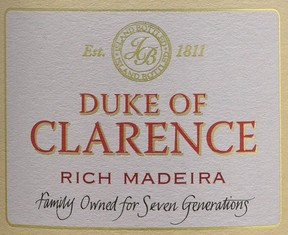
Blandy’s Madeira Duke of Clarence Rich N/V, Madeira, Portugal
$29.99 I 89/100
UPC: 5010867600027
Expect the classic amber colour with just a hint of green at the edge. The nose is ripe and sweet with a nutty, floral, rancio, honey raisin character. The palate is creamy, with a spicy chocolate vanilla raisin tobacco note and fine underlying acidity. Think cake here with the best match, likely ginger or coffee or sip it after dinner.
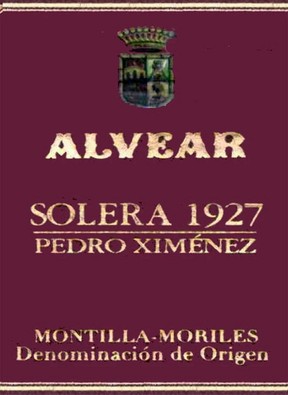
Alvear Solera 1927 Pedro Ximenez N/V, Montilla-Moriles, Spain
Advertisement 7
Article content
$33.90 (375ml) I 91/100
UPC: 00766238809777
The solera started in 1927, so a tiny portion of this wine is now 90 years old. Pedro Ximenez grapes are harvested late and spread out on mats for one month to dry in the southern Spain sun until they are raisins. When pressed, the must is exceptionally sweet and quickly muted with the addition of spirit. Dark maple syrup and roasted pecans mix with raisins, dried apricot, hoisin, coffee, walnut, orange and toffee flavours with a stream of acidity to keep it all fresh. Full in the mouth and quite sweet at 405 grams of residual sugar. Try with dried fruit, nuts and cheeses or a pecan tart.
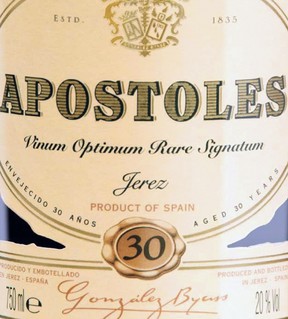
Apostoles VORS Palomino Fino — Pedro Ximenez N/V, Jerez, Spain
$39.99 (375ml) I 92/100
UPC: 08410023090445
Advertisement 8
Article content
Try something different like this “Very Old Rare Sherry” or Vinum Optimum Rare Signatum, a label the Jerez Consejo Regulador awards specific wines of exceptional quality with an average age of over 30 years. Apostoles is, in fact, much older thanks to its working Solera that dates to 1862 to mark the visit of Queen Isabella to Jerez. A meal in itself, this is a gorgeous, intense, rich wine packed with raisins, figs, sweet marmalade, walnuts, and dark honey, but why not fill in your unctuous descriptor? The wine is based on the palomino grape, but adding seven per cent Pedro Ximenez sweetens the wine, thickens the palate, and adds a bit of fat to a refreshing finish. There are precious few old soleras, so this is a real opportunity to taste and enjoy history in your glass.
Advertisement 9
Article content

Taylor Fladgate Vintage Port Touriga 2016, Douro Valley, Northern Portugal, Portugal
$149.99 I 98/100
UPC: 5013626115695
As you might expect, weather plays a big part in a splendid year for vintage port. A rare wet spring and cool weather recharged the drought-stricken soil, reduced yields and lengthened the growing season into the cooler fall months. The first grapes picked at Quinta de Vargellas arrived at the winery on Sept. 17, with the Pinhão Valley estates following on Sept. 23 and 26, respectively. The colour is opaque — lovely pure fruit with perfect acidity and bones, all in the elegantly restrained Taylor style. A sure sign of an extraordinary wine is that you can drink this now or put it away for 50 years and beyond. Young collectors can be assured that this wine will be with them their entire lives — a fabulous gift for collectors.
Advertisement 10
Article content

Taylor Fladgate Golden Age 50-Year-Old Tawny Porto, Douro Valley, Portugal
$349.99 I 95/100
UPC: 5013626116722
Taylor Fladgate Golden Age is a collector’s edition port released in limited quantities. In the years leading up to the blending, the individual wines were aged in Taylor’s cellars in specially selected seasoned oak casks that the firm’s team of expert coopers cared for. Fifty years is considered the Golden Age of maturity for such a Tawny. The fruit comes from the Douro Valley’s eastern reaches, thought the best source of long-lasting wines. The colour mixes chestnut and copper with typical elegant and ethereal aromas of nutmeg, rum, raisins and spice. The palate continues the parade of flavours with prunes dried apricot, streaks of orange and a freshness of acidity that adds life to the butterscotch-coated almond finish. Long, complex, and contemplative, this is an intriguing bottle of port for the enthusiast. Its exposure to oxygen over 50 years means if you have the willpower, you can open the bottle and taste it over weeks without worrying about it going off. Pecan pie, anyone? Look for this in private wine stores in December.
Advertisement 11
Article content
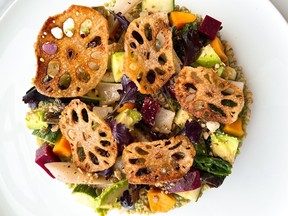
Recipe match: Super Bowl with toasted farrow and pickled vegetables
This recipe by Sandy Chen, the chef de cuisine at Archer restaurant, is packed full of vegetables and toasted grains for a warm-and-savoury mix that’s perfect for a cold winter’s day:
Super Bowl
Avocado Green Goddess Dressing
1 whole avocado
1 clove garlic
1 bunch scallion
1 1/2 tbsp (22.5 mL) lemon juice
1/3 cup (80 mL) herbs including fresh cilantro, basil leaf, chive, tarragon; mixed
1/4 cup (60 mL) Greek yogurt
2 tbsp (30 mL) olive oil
2 tbsp (30 mL) apple cider vinegar
1 tbsp (15 mL) honey
Cayenne pepper, to taste
Salt and pepper, to taste
Remove basil leaf, and tarragon leaves from the stems, and roughly chop. Place it in the vita-mix blender or any blender, with garlic, yogurt, vinegar, lemon juice. Blend until smooth; during the process, add the oil, seasoning and cayenne pepper.
Advertisement 12
Article content
Once it’s smooth, taste it, might need to add more seasoning. Then pour into a container, close it and store it in the fridge.
Before serving it, cut the avocado into chunks and add into the base that you made earlier. Blend it with a hand blender until smooth. Transfer back into the container or sauce bottle until ready to plate. Finished dressing can be stored in the fridge for up to two days.
Pickling Liquid for vegetables
1 cup (250 mL) rice vinegar
2 bay leaves
1 tsp (5 mL) whole black peppercorn
1/2 cinnamon stick
1 cup (250 mL) sugar
Vegetables
2 medium-size red beets
1 head fennel
1 whole cucumber
1 small butternut squash
1 small jicama
Chef’s note: You may pick the vegetables you like to eat.
Place all pickling liquid ingredients in a large pot. Bring it to boil until the sugar dissolves. While waiting for the liquid to boil, peel and cut chosen vegetable into 1 cm thickness. Place the cut vegetables into a glass container and pour the hot liquid in it, let it set for an hour or two before service.
Advertisement 13
Article content
Toasted Farro and Quinoa
1/4 cup (60 mL) farro
1/4 cup (60 mL) quinoa
Preheat oven at 350 F. Place the farro and quinoa on two baking trays with parchment paper. Transfer into the oven, and let toast for 10 minutes; until you can smell the aroma. After toasting, cook the farro and quinoa individually; quinoa 8 minutes, farro 10 to 15 minutes, check the doneness before straining. Transfer the farro and quinoa onto sheet tray, let it cool down before mixing with the dressing.
Assembly
Place farro and quinoa in mixing bowl, fold in avocado green goddess dressing. Taste it. You may need to add black pepper. Place the mixture on plate or bowl, add the pickling vegetables on top (about 30 g of pickled vegetable per dish), with fresh-cut avocado chunks, if desired. Sprinkle with some store-bought mixing nuts and lotus chips, if desired.
Advertisement 14
Article content
Serves 2-3.
Recipe match
Quinoa with toasted farrow and pickled vegetables sounds busy, but the critical match is with the avocado Green Goddess dressing, and we suggest still or sparkling rosé.
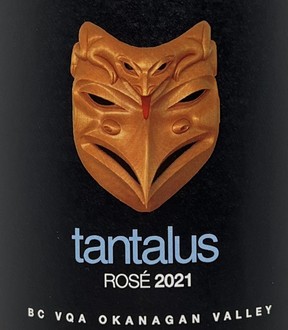
Tantalus Rosé 2021, Okanagan Valley, British Columbia, Canada ($25.99)
A vibrant pink with a savoury blood orange undertone, citrus peel and wild berries, and a saline, stony mineral finish undertone should supercharge this dish.
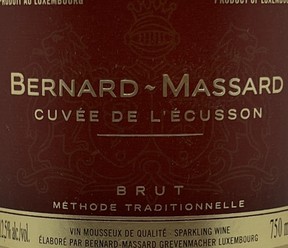
Bernard-Massard Cuvée de L’Écusson Rosé N/V, Luxembourg ($26)
A barrage of raspberries and candied cherries cover the palate with a light fizz and an almost dry back end that should cut into the dressing and take on the pickled vegetables.
More news, fewer ads: Our in-depth journalism is possible thanks to the support of our subscribers. For just $3.50 per week, you can get unlimited, ad-lite access to The Vancouver Sun, The Province, National Post and 13 other Canadian news sites. Support us by subscribing today: The Vancouver Sun | The Province.
Source: vancouversun.com


